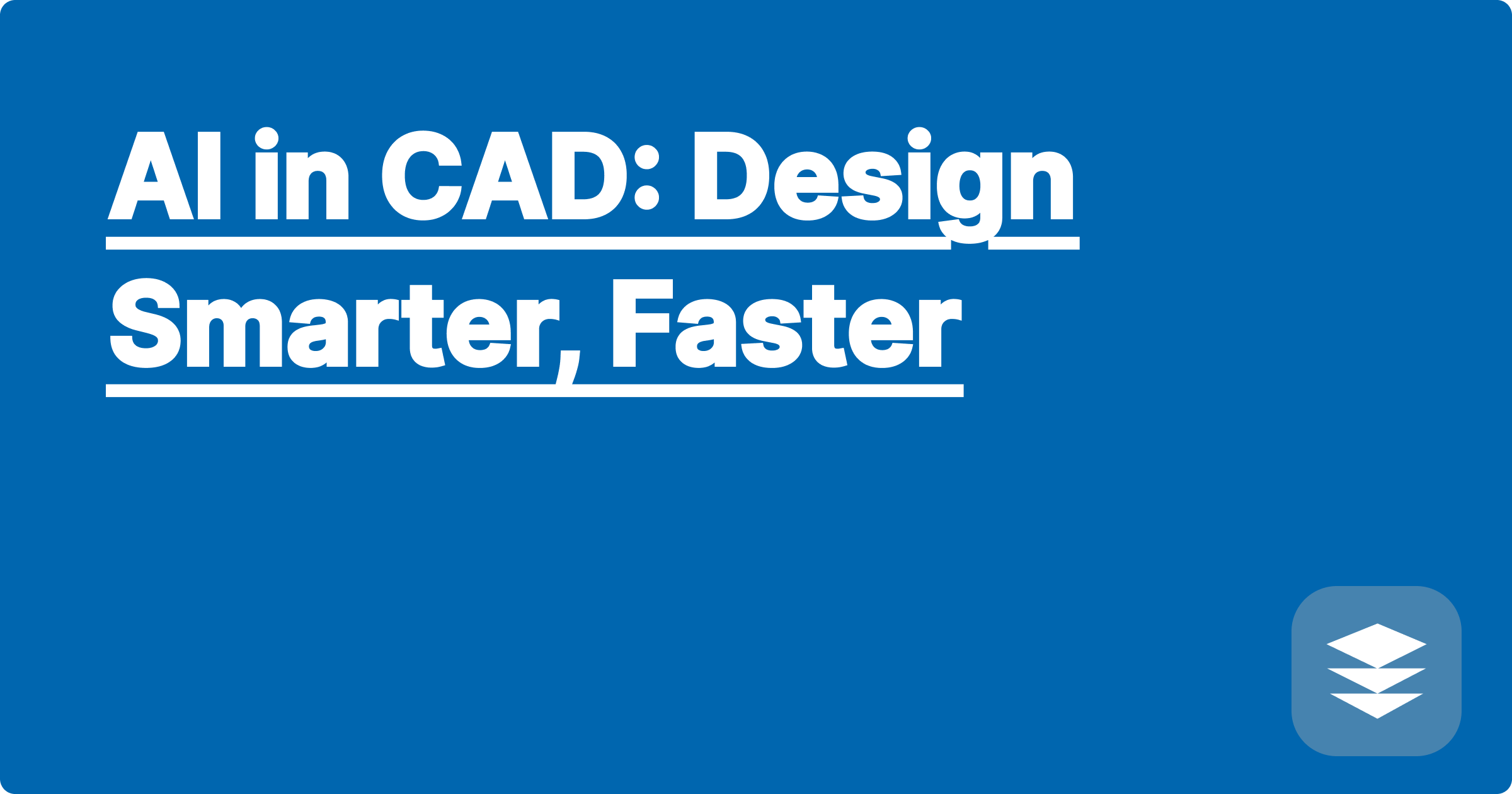
The world of STEM is built on precision, innovation, and efficiency. Students and researchers constantly grapple with complex designs, intricate simulations, and mountains of data. Traditional Computer-Aided Design (CAD) software, while powerful, can be time-consuming and require extensive expertise. Imagine a world where design iterations are instantaneous, where complex geometries are optimized effortlessly, and where the tedious aspects of CAD are automated. This is the promise of AI in CAD: designing smarter, not harder. By integrating artificial intelligence into the design process, we can unlock unprecedented levels of productivity and creativity, enabling STEM professionals to focus on what truly matters: pushing the boundaries of scientific and technological advancement.
For STEM students and researchers, time is a precious commodity. Juggling coursework, research projects, and other commitments demands efficient workflows. AI-powered CAD tools offer a revolutionary approach to streamlining the design process, freeing up valuable time for analysis, experimentation, and deeper exploration of research questions. This blog post delves into the practical applications of AI in CAD, offering actionable strategies and real-world examples to empower you to design smarter, faster, and more effectively. We will explore how AI tools like ChatGPT, Claude, and Wolfram Alpha can be integrated into your workflow, transforming the way you approach design and analysis.
Traditional CAD workflows often involve repetitive tasks, tedious manual adjustments, and time-consuming simulations. Designing complex geometries can be a laborious process, requiring significant expertise and meticulous attention to detail. Furthermore, optimizing designs for specific performance criteria often involves numerous iterations and extensive simulations, further adding to the time investment. Analyzing large datasets generated from simulations or experiments can also be a significant bottleneck, requiring specialized software and expertise in data processing and visualization. These challenges can hinder research progress, limiting the scope and depth of investigations, especially for students working under tight deadlines.
Artificial intelligence offers a transformative solution to these challenges. AI-powered CAD tools can automate repetitive tasks, accelerate design iterations, and optimize designs for specific performance criteria. For example, generative design algorithms can explore a vast design space, generating innovative solutions that might not be apparent to a human designer. AI-powered simulation tools can significantly reduce computation time, allowing for rapid exploration of different design parameters. Furthermore, AI can assist in data analysis and visualization, identifying patterns, trends, and insights that might be missed with traditional methods. By integrating AI into the CAD workflow, we can drastically reduce design time, improve design performance, and gain deeper insights from data.
Integrating AI into your CAD workflow can be achieved through several approaches. First, consider using AI-powered plugins or extensions for existing CAD software. These tools often provide features like generative design, automated optimization, and intelligent sketching. Second, explore cloud-based AI platforms that offer specialized CAD functionalities. These platforms often leverage powerful computing resources and advanced algorithms to accelerate simulations and optimize designs. Third, consider using AI-powered assistants like ChatGPT or Claude to automate tasks like generating design documentation, writing code for simulations, or even brainstorming design ideas. Finally, utilize tools like Wolfram Alpha for complex calculations, data analysis, and symbolic computations related to your design.
In the field of aerospace engineering, AI can be used to optimize the design of aircraft wings for aerodynamic efficiency. By inputting design parameters and performance criteria into an AI-powered optimization tool, engineers can quickly explore a wide range of wing shapes and configurations, identifying the optimal design that minimizes drag and maximizes lift. In biomedical engineering, AI can assist in the design of prosthetic limbs. Generative design algorithms can generate personalized prosthetic designs based on individual patient data, optimizing for comfort, functionality, and aesthetics. In materials science, AI can be used to predict the properties of new materials based on their chemical composition and structure. This can accelerate the discovery and development of new materials with desired properties, such as strength, flexibility, or conductivity.
To effectively leverage AI in your STEM education and research, start by identifying specific tasks or challenges that can be addressed with AI tools. Focus on automating repetitive tasks, accelerating simulations, or improving data analysis. Experiment with different AI tools and platforms to find the ones that best suit your needs and workflow. Don't be afraid to explore online tutorials, documentation, and community forums to learn more about AI tools and their applications. Collaborate with other researchers and students who are using AI in their work. Sharing knowledge and best practices can accelerate your learning and broaden your perspectives. Finally, remember that AI is a tool, and its effectiveness depends on how you use it. Be critical of the results generated by AI tools and always validate them with your own knowledge and expertise.
By embracing the power of AI, STEM students and researchers can unlock new levels of productivity, creativity, and innovation. Start exploring the world of AI-powered CAD tools today and discover how you can design smarter, faster, and more effectively. The future of design is intelligent, and the time to embrace it is now. Don't be left behind – explore the resources available, experiment with different platforms, and integrate AI into your workflow to gain a competitive edge in your research and studies. This journey into AI-driven design offers a powerful opportunity to enhance your skills, accelerate your research, and contribute to the advancement of science and technology.
AI in Robotics: Efficient Simulations
GPAI: Your AI Study Partner for STEM
AI Research Notes: Organize Smartly
Ace STEM Exams: AI Study Partner
AI in CAD: Design Smarter, Faster
AI for Chemistry: Equation Ace
AI for Biology: Data Visualization
AI for Simulations: Optimize Results